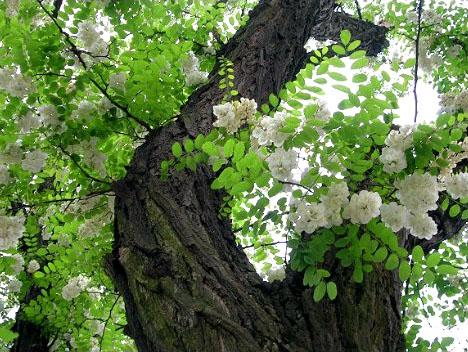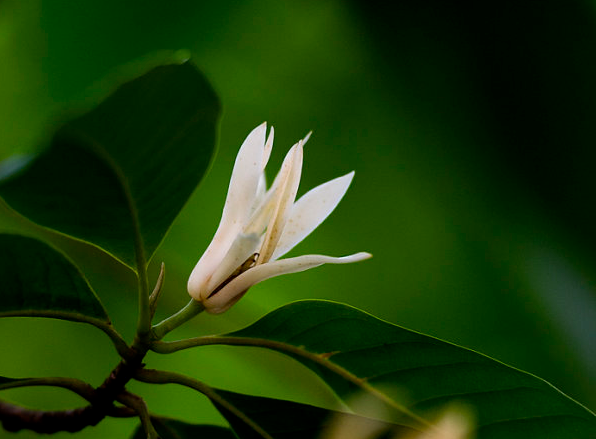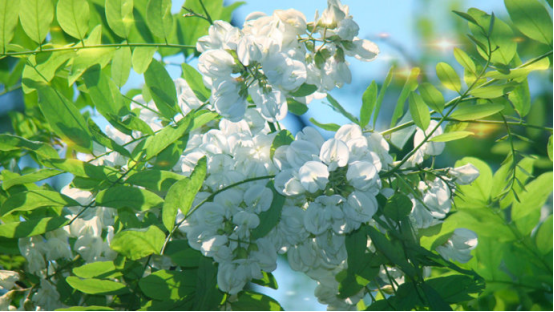How to plant Flos Sophorae
1. Sowing seeds
Although the plant of Sophora japonica is tall, we can use seeds to propagate. We should select healthy and full seeds to breed, soak them in warm water for a day and a night to promote germination, then mix the seeds in fine sand, and then germinate at a temperature of about 20 degrees Celsius. We can wait for the seeds to germinate before we can plant them. In addition, we should pay attention to the selection of flowerpots for locust flowers. The root system of Sophora japonica is longer, to choose a larger, deeper flowerpot, sowing it is best to plant in the open field, grow faster, and then transplant into the pot after growing into a small plant.
two。 Intermediate seedling
When the plant grows to about 15cm, we move it into the pot and plant it. We should choose deeper flowerpots and cultivate the locust flowers in a sunny environment.

3. Fertilizer application
The growth of Sophora japonica requires us to provide it with sufficient nutrients. During the growing period of Sophora japonica, sprinkle some fertilizer around the potted soil, and then water it.
4. Pruning
The growth rate of Sophora japonica is moderate, and topping should be carried out in time to promote branching in the seedling growth period. We need to cut off the old branches and yellowing leaves in time.
[how to plant Flos Sophorae trees] detailed explanation of planting Sophora trees
In this colorful global village where we live, there are all kinds of flowers and trees. They are not only beautiful, but also protect our ecological environment. Do you also know a lot about trees that have made great contributions to nature? I think you may know something about locust trees, but how much do you know about the planting of locust trees? today, let the editor introduce to you the planting method of the locust tree, hurry up with the editor to have a look.
Trees, 15-25 m high. Pinnately compound leaves 15-25 cm long; leaf rachis hairy, base inflated; leaflets 9-15, ovate moment orbicular, 2.5-7.5 cm long, 1.5-3 cm wide, apex acuminate and apiculate, base broadly cuneate, gray-white below, sparsely pubescent. Panicle terminal; calyx campanulate, 5-denticulate, sparsely hairy; Corolla milky white, upper petal broadly cordate, shortly clawed, with purple veins; stamens 10, unequal. Pods fleshy, beaded, 2.5-5 cm long, glabrous, indehiscent; seeds 1-6, reniform. It can be used as a street tree and an excellent nectar plant. Sophora flower bud is edible, contains aromatic oil, and is a cool astringent hemostatic; Sophora frutescens can also stop bleeding and reduce blood pressure; root bark, branches and leaves are used medicinally to treat sores; seeds contain about 11% oil; wood is used for construction. It is widely cultivated in the north and south of China, especially in the Loess Plateau and North China Plain, as well as in Vietnam, Korea and Japan.
Transplanting should be carried out after defoliation in autumn or before sprouting in spring. Watering in time after planting, and watering about 3 times according to drought in the future to ensure survival. Robinia pseudoacacia has strong vitality. The survival rate of planting is high, and transplanting seedlings do not need to carry soil or chemical treatment. In order to make the seedlings grow healthily, after transplanting the seedlings, stubble from the ground, cut off thousands of branches on the ground, and leave a strong bud from the base. After flat stubble, Robinia pseudoacacia not only has high survival rate, but also has good tree shape and fast growth. Robinia pseudoacacia grows naturally with a beautiful crown and no need for pruning. The height of the tree can reach 2-3m in the same year, and the length of the main root and lateral root is up to 2m. It generally blossoms in the second year after planting.
Root-burying breeding:
This is the most important method of breeding, and the survival rate can be 85% to 90% if properly managed. The roots of Robinia pseudoacacia can be introduced after falling leaves, and before planting, the roots can be buried and preserved in sandy soil to control the humidity of sandy soil, so that the roots can not be dehydrated and withered, nor can they become moldy and rot due to too much water. The new high-fat film is sprayed on the branch surface to protect the branch water from transpiration.
Seedling management:
Uncover the film and water in time after emergence, and pay attention to drainage in case of continuous rain. In the seedling stage, we should pull up the grass in time, wipe off the lateral buds, loosen the topsoil, do not hurt the tender and weak short roots, and spray the new high-fat film on the plant surface, which can prevent the infection of germs, improve the ability to resist natural disasters, improve the intensity of photosynthesis and protect the seedlings from thriving.
Growth management:
Appropriate amount of fertilization, for a long time, clear dung water is used to resist drought and topdressing fertilizer, to promote seedling health, to maintain reasonable water and fertilizer, timely spray new high-fat film to protect fertilizer and soil moisture. The seedlings were transplanted and planted after falling leaves at the end of autumn or before sprouting in spring next year. Burrowing and fertilizing according to the plan, compacting the soil after planting, pouring through the fixed root water, the survival rate is generally more than 95%. After autumn, the height of the tree can reach 2cm, the DBH is 3~5cm, and it blossoms in the second year. The trunk of the fragrant flower locust tree is tall and straight, the crown is open, the tree shape is beautiful, the flowers are gorgeous, and the aroma is striking.
The above content is the planting method of the locust tree introduced by the editor. Through such a detailed introduction, we must know something about the planting method of the tree. Now that you have basically understood it, you might as well try to plant it and see if you have a high vision and a low skill. If you have any questions that you do not understand, you can continue to explore on the Internet, but you are not ashamed to ask questions that you do not understand. Be a knowledgeable person! I hope the editor's introduction can bring help to everyone!
How to plant Flos Sophorae trees and when to bloom
Sophora japonica is a common big tree, its branches and leaves are luxuriant, and every spring it will produce bright locust flowers, which can not only be appreciated, but also have a lot of medicinal value. So how do you plant locust trees and when do they bloom? Let's get to know it with the editor.
How to plant Flos Sophorae
Materials of Sophora japonica trees
Sophora japonica is a large tree with a height of 15-25 meters, pinnately compound leaves 15-25 cm long, leaf axis hairy and base inflated. Sophora japonica can be used as a street tree, is a good source of honey plant, the bud of Sophora japonica is edible, but also can stop bleeding and reduce blood pressure. And its root bark, branches and leaves have medicinal value to treat ulcers.
Transplanting should be carried out after defoliation in autumn or before sprouting in spring. Watering in time after planting, and watering about 3 times according to drought in the future to ensure survival. Robinia pseudoacacia has strong vitality. The survival rate of planting is high, and transplanting seedlings do not need to carry soil or chemical treatment. In order to make the seedlings grow healthily, after transplanting the seedlings, stubble from the ground, cut off thousands of branches on the ground, and leave a strong bud from the base. After flat stubble, Robinia pseudoacacia not only has high survival rate, but also has good tree shape and fast growth. Robinia pseudoacacia grows naturally with a beautiful crown and no need for pruning. The height of the tree can reach 2-3m in the same year, and the length of the main root and lateral root is up to 2m. It generally blossoms in the second year after planting.
Second, root-burying breeding
The root-burying breeding of Sophora japonica trees is the most important breeding method, with a survival rate of 85%-90%. The roots can be introduced after falling leaves, and the roots can be buried and preserved in sandy soil before planting, so that the roots can not be dehydrated and withered, and can not be moldy and rotten due to too much moisture.
III. Seedling management
Uncover the film and water in time after emergence, and pay attention to drainage if you encounter continuous overcast and rain. Sophora japonica trees should pull grass in time and loosen the topsoil at the seedling stage, but be careful not to hurt the young roots, but also need to spray potions to the seedlings to prevent the erosion of pests, improve the ability of natural disasters and protect the seedlings from thriving.
IV. Growth management
Sophora japonica trees in the growth management, should be appropriate fertilization, if encountered drought, to use clear dung water to fight drought, can promote the health of the seedlings. The seedlings of Sophora japonica trees are transplanted and planted after falling leaves at the end of autumn or before sprouting in the spring of next year, burrowing and fertilizing according to the plan, compacting the soil after planting, pouring through the root water, and the survival rate is generally more than 95%.
When do the locust flowers bloom?
1. Locust trees are often planted by the side of the house or by the roadside, and they are widely planted all over China, mainly in the north, especially in the Loess Plateau and North China Plain. The locust tree usually blossoms in April-May every year, and the flowering period is about 10-15 days.
2, the taste of Sophora japonica is a little bitter, non-toxic, with cool blood to stop bleeding, clear the liver to remove fire, can treat hematochezia, urine, sore throat and other diseases. However, the nature of the locust flower is cold, if the spleen and stomach deficiency cold people are not suitable to eat.
How to plant the locust tree and when the locust flower blossoms are introduced here, I hope it will be helpful to everyone! The shape of the locust tree is as high as it can be seen. Besides, it can also shade us from the sun in summer, killing two birds with one stone.
- Prev

Maintenance of white orchid during flowering period
1. Sufficient light the white orchid likes the growth environment with sufficient light, which should not be less than 6 hours a day. If the white orchid is kept in the shade, it will only grow leaves but not blossom, or blossom very little. But in the hot and hot "dog days" to moderate shade, generally at 12-16:00 every day to avoid the hot sun exposure
- Next

Matters needing attention in Flos Sophorae Culture
1. Timely weeding usually grows grass around locust flowers, and so can potted plants. We can't use herbicides because the growth of Sophora japonica flowers will be affected. We can only do manual weeding and remove the grass from the roots. two。 Pruning in time is beneficial to the shape beauty of Sophora japonica trees.
Related
- Fuxing push coffee new agricultural production and marketing class: lack of small-scale processing plants
- Jujube rice field leisure farm deep ploughing Yilan for five years to create a space for organic food and play
- Nongyu Farm-A trial of organic papaya for brave women with advanced technology
- Four points for attention in the prevention and control of diseases and insect pests of edible fungi
- How to add nutrient solution to Edible Fungi
- Is there any good way to control edible fungus mites?
- Open Inoculation Technology of Edible Fungi
- Is there any clever way to use fertilizer for edible fungus in winter?
- What agents are used to kill the pathogens of edible fungi in the mushroom shed?
- Rapid drying of Edible Fungi

